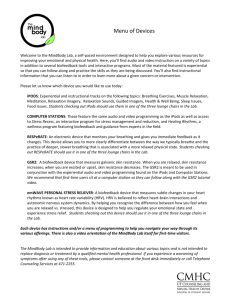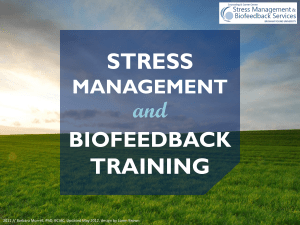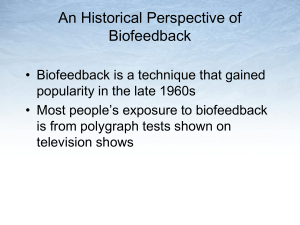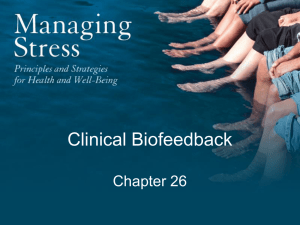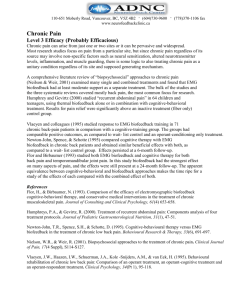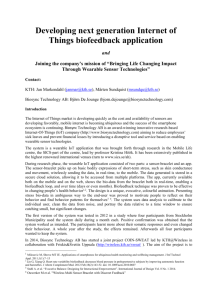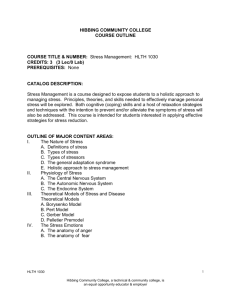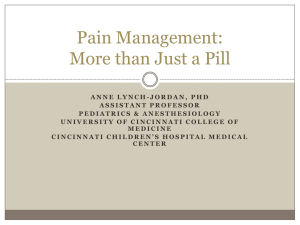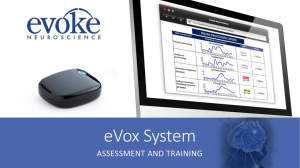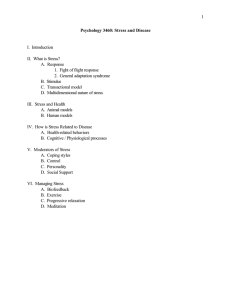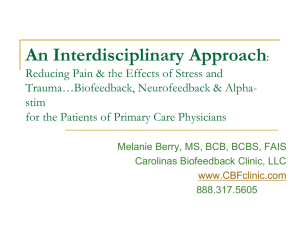Biofeedback Therapy Experiment Alternative Assignment
advertisement
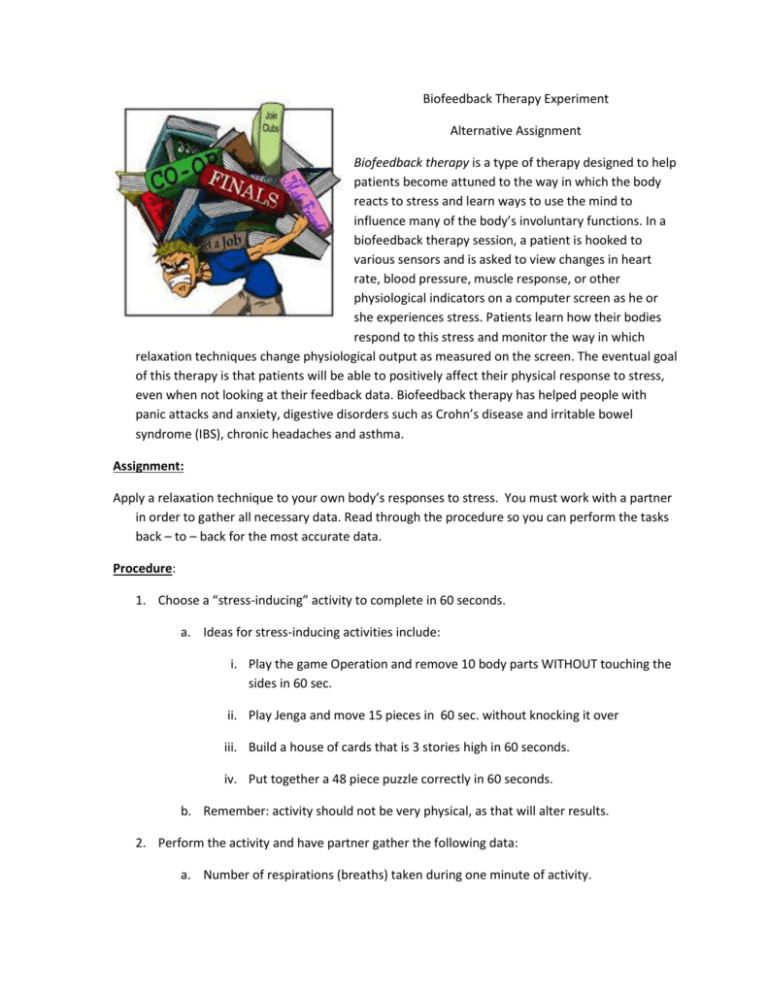
Biofeedback Therapy Experiment Alternative Assignment Biofeedback therapy is a type of therapy designed to help patients become attuned to the way in which the body reacts to stress and learn ways to use the mind to influence many of the body’s involuntary functions. In a biofeedback therapy session, a patient is hooked to various sensors and is asked to view changes in heart rate, blood pressure, muscle response, or other physiological indicators on a computer screen as he or she experiences stress. Patients learn how their bodies respond to this stress and monitor the way in which relaxation techniques change physiological output as measured on the screen. The eventual goal of this therapy is that patients will be able to positively affect their physical response to stress, even when not looking at their feedback data. Biofeedback therapy has helped people with panic attacks and anxiety, digestive disorders such as Crohn’s disease and irritable bowel syndrome (IBS), chronic headaches and asthma. Assignment: Apply a relaxation technique to your own body’s responses to stress. You must work with a partner in order to gather all necessary data. Read through the procedure so you can perform the tasks back – to – back for the most accurate data. Procedure: 1. Choose a “stress-inducing” activity to complete in 60 seconds. a. Ideas for stress-inducing activities include: i. Play the game Operation and remove 10 body parts WITHOUT touching the sides in 60 sec. ii. Play Jenga and move 15 pieces in 60 sec. without knocking it over iii. Build a house of cards that is 3 stories high in 60 seconds. iv. Put together a 48 piece puzzle correctly in 60 seconds. b. Remember: activity should not be very physical, as that will alter results. 2. Perform the activity and have partner gather the following data: a. Number of respirations (breaths) taken during one minute of activity. b. Pulse rate as soon as activity is completed. c. Temperature taken as soon as activity is completed. (axillary, sublingual (under tongue) or forehead thermometers are fine) 3. Record data. 4. Choose a relaxation technique to use for 60 seconds. a. Ideas for relaxation techniques can include: i. Deep belly breathing ii. Soft music iii. Guided imagery 5. Perform the activity and have partner gather the following data: a. Number of respirations (breaths) taken during one minute of activity. b. Pulse rate as soon as activity is completed. c. Temperature taken as soon as activity is completed. (axillary, sublingual (under tongue) or forehead thermometers are fine) 6. Record data. 7. Analyze your data and answer the conclusion questions. Stress Relaxation Heart Rate Respiration Rate Body Temperature Conclusion Questions 1. Do you expect your heart rate, respiration rate, and temperature to go up or down in times of stress? Explain your reasoning for each. 2. Why do you think seeing the body’s reaction on a screen may help some people control their stress levels? 3. Explain why having continuous heart rate data (EKG) would provide even more useful data to your biofeedback experiments. 4. What hormone is produced during the Fight or Flight response? 5. Explain which physiological indicator, heart rate, respiration rate, or skin surface temperature, allowed you to see the greatest response by your body. Why do you think this was the case? 6. Referencing the way in which the nervous system works, explain why your skin surface temperature rose when you started to calm down. 7. Describe how two medical conditions might be helped by biofeedback therapy. 8. Describe at least two medical interventions that have been developed to help people cope with stress. 9. Some scientists do not subscribe to mind-body therapy as a legitimate medical intervention. Why do you think this is? What evidence could you provide to validate the power of biofeedback? 10. Provide advice for a patient who is struggling with anxiety over painful and stressful cancer treatments. Give a strategy that may help him/her get through the treatments.
